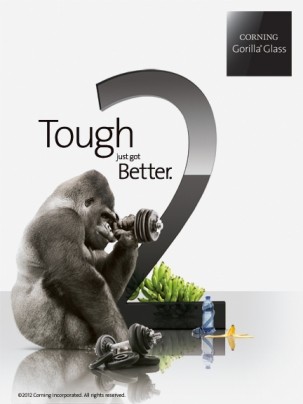I can vividly remember purchasing my first real smartphone several years ago. The idea that I was now carrying around a premium (and very expensive) piece of hardware was initially tough to deal with. Quite frankly, I babied the phone for several months and kept it locked inside a heavy-duty plastic and rubber case.
Like an overprotective parent, I gradually loosened my grip on the handset and let it live a free life. Over time, I realized the phone was actually much tougher than I gave it credit for. As it turned out, a large part of that toughness was credited to the glass I thought made the phone a liability.
This fragile glass was none other than Corning's Gorilla Glass, practically a household name among mobile enthusiasts these days. Gorilla Glass is now used in over one billion consumer devices spanning 33 major brands and 500 different models.
It started out innocently enough with smartphones adopting the tough-as-nails glass but as tablets burst onto the scene a few years ago, Corning was right along for the ride. Now we're even seeing notebooks and televisions equipped with the hardened glass.
All of this data comes from Corning's third quarter results released yesterday. It was revealed that the company had earned $2.04 billion in revenue during Q3 - a seven percent increase sequentially but a two percent decrease year-to-year. Corning reported net income of $521 million, an increase of $59 million over last quarter but a full 36 percent less than the $811 million earned during the same time last year.
